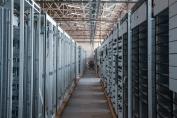
The Hidden Environmental Cost of Deepfake Videos: What Every Creator Should Know
- 27 October, 2025
Why deepfake videos are more than a cultural problem
You probably scroll past a dozen AI‑generated videos every day. They’re getting uncanny — sometimes funny, sometimes jaw‑dropping, sometimes genuinely upsetting when they recreate public figures or people who’ve passed. From what I’ve seen, the conversation tends to stop at ethics and misinformation. That’s important, obviously. But there’s an under‑the‑radar consequence worth paying attention to: the environmental footprint of making those clips. Try this AI data centres Asia Pacific perspective to understand how local infrastructure choices shape environmental outcomes.
Where are deepfakes actually made?
It’s easy to assume the magic happens on someone’s phone or laptop. In reality, the heavy lifting — the training and much of the inference — usually runs on remote GPU farms inside data centres. Those are the places that host the accelerators doing the matrix math, and yes, every viral render you watch probably traced back to machines that draw serious power and need industrial cooling. Not glamorous. But real.
How data centres consume resources
- Electricity: GPUs and servers guzzle power, especially during training, but even short video generation can fire up sizable clusters. Think of it as lots of high‑intensity, short bursts of compute — and those bursts add up fast.
- Water: Many facilities still use freshwater for evaporative cooling or water‑cooled chillers. That’s not just a line item in a sustainability report; in some regions it’s a local resource that communities rely on.
- Land and infrastructure: Data centres aren’t plug‑and‑play. They need space, fibre, substations, and backup power. Network design and grid upgrades follow data centre buildouts, which reshapes local planning in ways people don’t always anticipate.
Real-world concern: local impacts and planning gaps
Dr Kevin Grecksch at Oxford isn’t talking hypotheticals — these are lived problems. I’ve worked alongside infrastructure teams where enthusiasm for a new model outran practical planning. Result: a mismatch between promised service and actual capacity. Regions branded as "AI growth hubs" can quickly run into questions like: where will the cooling water come from? Can the grid take the load at peak? Those aren’t academic; they’re the day‑to‑day headaches of operators and planners.
Why this matters for creators and platforms
Creators and platform owners often view the issue as someone else’s problem. That’s a risky stance. A few concrete reasons to care:
- Scale multiplies impact: An app hitting a million downloads in a weekend can mean millions of compute‑hours. That’s not theoretical — it’s scale suddenly showing up in bills and infrastructure needs.
- Geographic effects: Cooling and power demands concentrate environmental stress locally. In water‑stressed regions, that’s a real social and ecological cost.
- Regulatory risk: If local resources get strained, authorities may restrict siting or cooling choices. That impacts latency, availability, and sometimes the business model itself.
Simple analogy to make it stick
Think of each deepfake render like running a little factory for a few minutes. One factory isn’t a problem. Thousands, clustered together? Suddenly you’re talking about measurable water and power demand. The cumulative effect is what sneaks up on planners and operators.
Practical steps to reduce the environmental footprint
There are real, practical levers — and they aren’t all expensive or painful. Here’s what teams I respect actually do:
- Optimize models and pipelines: Use leaner architectures, pruning, quantization, and smart caching. Often you can shave 30–70% off inference cost with modest tradeoffs in quality. Been there, seen that work.
- Batch or schedule heavy jobs: Run intense renders in off‑peak windows or when renewables are generating. It’s a scheduling problem as much as a model one.
- Favor greener data centres: Choose providers using air‑side economization, direct‑to‑chip liquid cooling, or on‑site renewables. Not every provider is equal here.
- Limit unnecessary generation: Push creators toward thoughtful workflows — avoid mass‑spawning near‑identical variants or needless A/B churn. Quality over replication.
- Transparency: Give creators ballpark carbon and water estimates for big jobs. When people see the cost, behavior changes. It’s basic behavioral economics. Learn more about practical infrastructure choices in AI data centres Asia Pacific.
Policy and planning: what governments and operators should do
Local authorities need to plan holistically. That means asking practical questions before signing off on AI infrastructure: what’s the local water budget? How will peak electricity be met? I’ve sat in planning meetings where the focus was all on jobs and investment — and the utilities conversation came later. That’s backward. Integrate resource planning into AI strategy from day one.
A hypothetical example
Picture a small county that gets designated an AI hub. Two data centres go up, both pick water‑cooled systems because they’re cost‑efficient. Within months, a hot summer and rising demand drop nearby wells; farmers complain, residents get higher bills, and political pressure mounts. If planners had required air‑cooled designs or enforced on‑site water recycling, many impacts could’ve been avoided. It’s not sci‑fi — it’s a planning decision with clear tradeoffs.
Balancing innovation and sustainability
AI itself isn’t the enemy. What worries me is unchecked growth without infrastructure foresight. In my experience, small changes — prioritizing efficiency in model design, choosing different cooling tech, or smarter scheduling — often yield outsized environmental wins. We can have the creative benefits of generative AI and still pay attention to resource stewardship. It’s not zero‑sum.
Key takeaways
- Deepfakes have hidden environmental costs: electricity, water, and infrastructure strain are tangible, local issues.
- Creators and platforms matter: better model design, scheduling, and transparency cut impact — and often save money too.
- Policy must catch up: siting, cooling, and resource planning should be central to AI growth strategies, not an afterthought.
For further reading on data centre water use and cooling approaches, look at research from the International Energy Agency and industry whitepapers on sustainable data‑centre design. They’re dry, but useful. Read our in-depth look at AI data centre infrastructure.
In my experience, when engineers, planners, and creators speak plainly about resource use, they find practical trade‑offs that preserve both innovation and local environments. Start that conversation — sooner rather than later.








